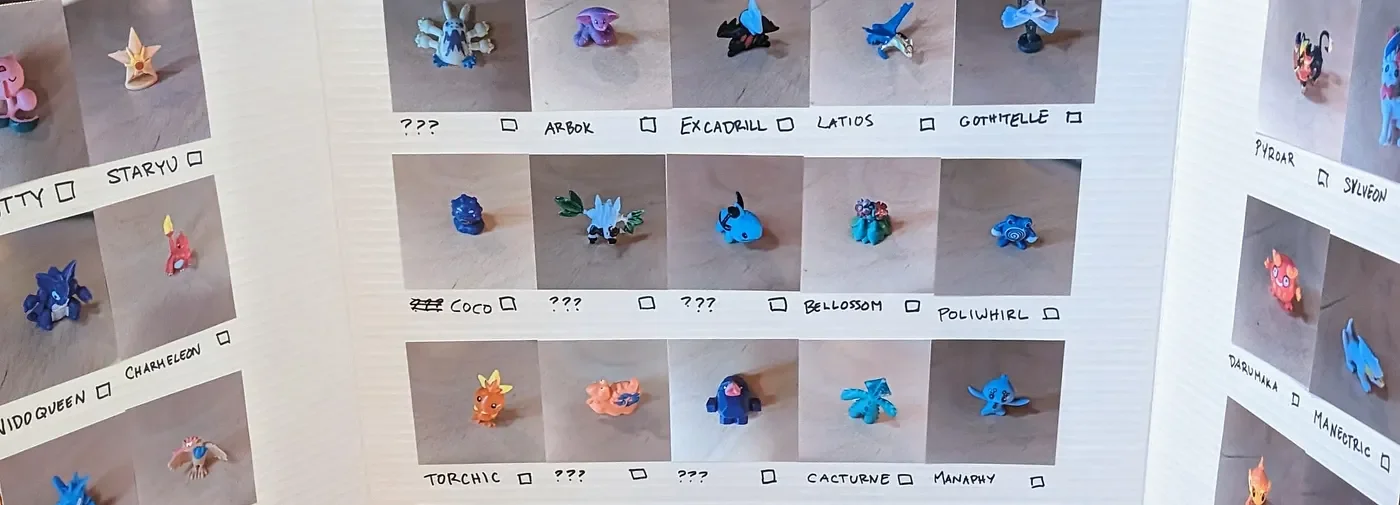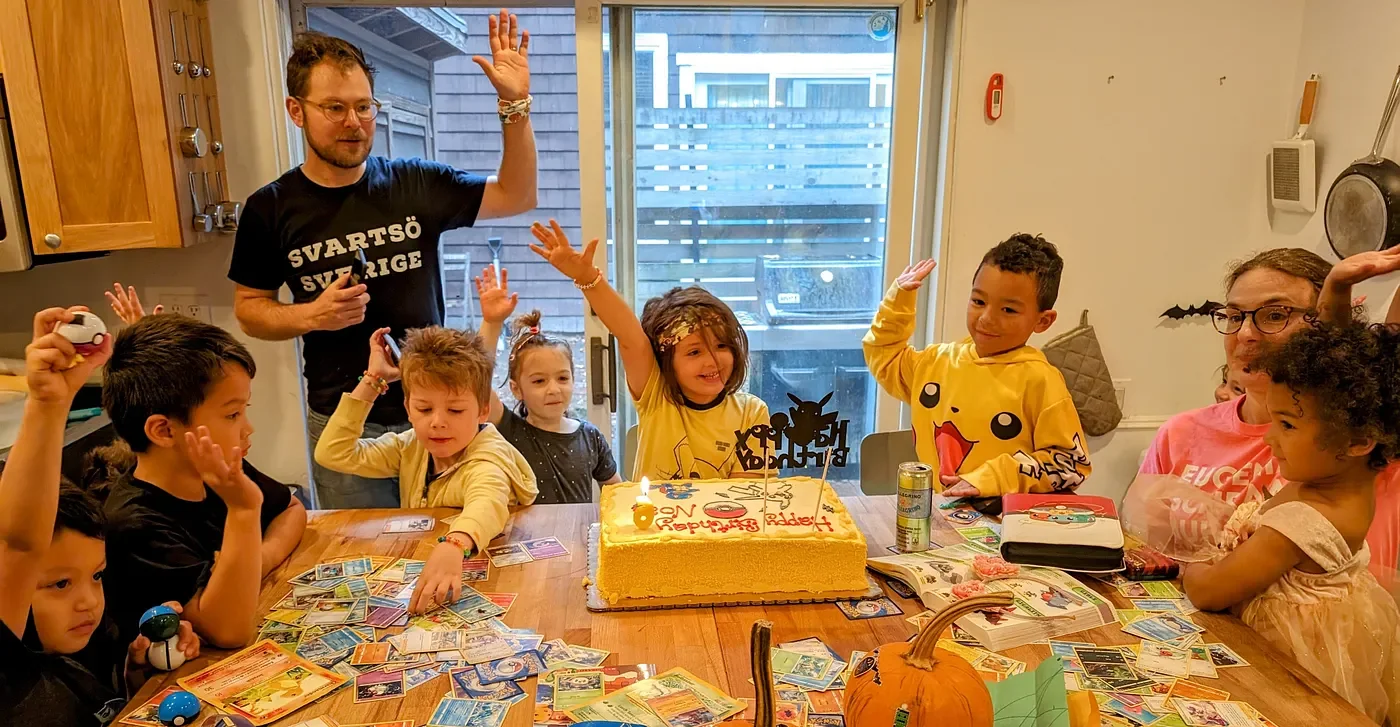Pokémon GO, IRL — With an Assist From ChatGPT
How AI helped save a birthday game from falling apart before it began.
My daughter is deep into Pokémon. She loves the cards, the games, and — most of all — Pokémon GO, which turns walks around the neighborhood into epic hunts. For her 6th birthday, I wanted to bring that magic indoors. So I dreamed up a party game: Pokémon GO, but IRL.
I bought a bag of figurines, some pokéballs, and made duct-tape-and-Velcro belts so kids could pop the balls onto their waist when they caught one. The idea was simple: hide Pokémon around the house, give the kids a giant Pokédex on a foam board, and let them “catch ’em all” before cake.
It was going great — until I realized one very big problem.
The Problem
I don’t actually know Pokémon. At all.
When I poured the figurines onto the table, panic hit: how could I make a Pokédex if I didn’t even know which Pokémon were which? To me, they all looked like colorful blobs.
The game was about to collapse under its own weight.
Enter ChatGPT
This was right when ChatGPT had just launched its vision feature. I figured: what if it could ID these Pokémon for me?
So I set up a makeshift photo studio and started uploading images, one figurine at a time. ChatGPT looked at each one and spit back its name and type. Within minutes, I was building a living Pokédex.
The matching was perhaps a little too accurate. In fact, it explained to me that several of my figurines were actually fake (totally shocking when I bought the $9.99 bag on Amazon). But here’s where human creativity still thrives. I renamed them “Mystery Types,” an even rarer Pokémon that no one could name. Suddenly, fake turned into fun.
The game
With the Pokédex ready, each kid strapped on a belt and took off hunting. At first I hid the figurines too well, but thanks to advice from a child-development expert friend, we realized 5- and 6-year-olds needed to see what they were looking for. So we carefully re-hid them, and soon the room was full of excited shouts of, “I found one!”
My husband ran the matching station: kids came racing back with their captured Pokémon, slapped the Velcro pokéball on their belt, and checked off the scorecard. Once every slot was filled, the whole team won — together.
And then we did what Pokémon trainers do best: ate cake.
Why It Worked
This could have been the kind of party idea that sounds fun in theory but falls apart in practice. Without ChatGPT, it honestly would have. I had the props, the enthusiasm, the kids ready to play — but none of the knowledge to make it coherent.
ChatGPT didn’t run the game, but it bridged the gap between my imagination and the real world. It turned chaos into structure, made the game playable, and even added new surprises when the figurines didn’t match.
And that’s the magic of using AI in family life: not as the star of the show, but as the sidekick that lets the story actually happen.



